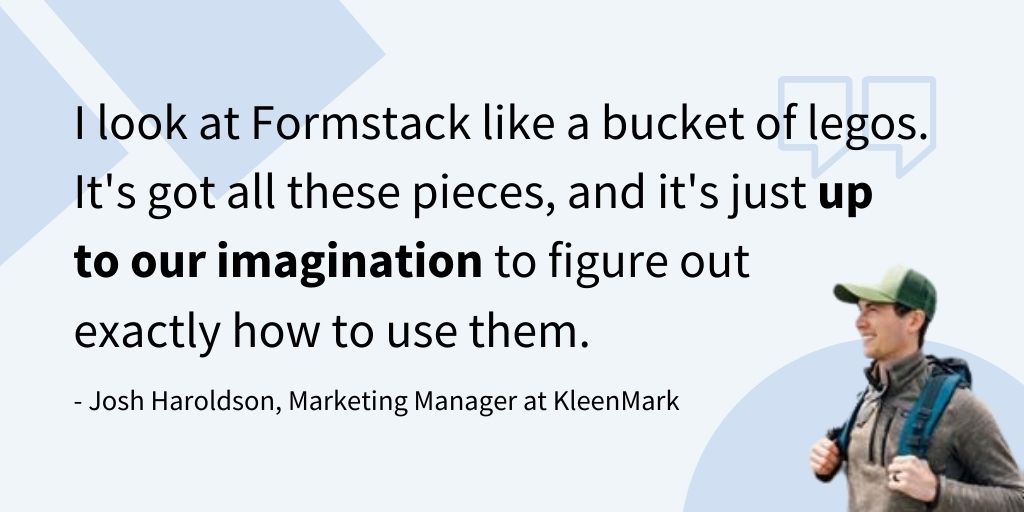Imagine you’re building a skyscraper in New York City. To do this, you need to have ample time to plan. You have to focus on creating a blueprint, hiring the right people, buying the supplies, and developing a project roadmap.
But it doesn’t stop there. You also need to consider all the external factors, like gathering permits, the impact on the buildings around your construction site, and how this new project affects your company overall. It’s a lot to consider, plan for, and enact.

As you begin building, any change you make to the plan causes a ripple effect. Pivoting takes lots of time, effort, manpower, and money. Decisions must go through multiple layers of approvals, and innovation may be stifled due to the effort it takes to make change.
The process of building a skyscraper from scratch is very much like going through a digital transformation. It can be overwhelming, stressful, and costly. It often takes over your time, teams, and budgets, pushing everything else to the wayside as you try to figure out how to revamp an entire process.
Now, consider building a skyscraper out of legos. Because the pieces all fit together with ease, you’re able to build quickly and efficiently. If you want to make a change, it can be done without a lot of manpower or effort. You can make updates to your building easily, without them impacting your entire process.

When building with legos, you’re able to make small, incremental changes quickly and easily. That’s the concept behind digital agility. It allows you to make changes as necessary, without needing to take a lot of time, effort, manpower, and money to make them.
What is digital agility?
Digital agility describes the ease with which an organization can rapidly enable, update, change, or adapt their processes. It is a specific type of business agility that encompasses the processes, tools, and software an organization uses to perform basic business functions.
One aspect of digital agility includes the tools in your tech stack. To be digitally agile, these tools need to be flexible, dynamic, and easy-to-use. This enables employees to easily transform existing processes during free time or quickly spin up new workflows in times of crisis.
Free Checklist: 7 Things to Consider Before Buying Software
Why is digital agility important?
In a pandemic world, work needs to be flexible, and systems should be easily adaptable. We’re living during a time that demands rapid change, quick launches, and innovative solutions.
Digital agility provides organizations with the power to rapidly develop, test, and launch new systems, processes, and workflows. What’s even better is that these new processes can be easily launched across departments or entire organizations.
Using the right tools gives you the power to create solutions in days instead of months. That’s why your tech stack is so important to digital agility. You can achieve milestones quickly and easily, without needing to overhaul everything at once.
Removing complicated tools, inefficient systems, and clunky software will transform not only the way employees work, but their level of satisfaction at work as well. Providing teams with the tools they need to get work done quickly, easily, and efficiently is key to success now and in the future.
Related: Why Workflow Automation is the Key to Job Happiness
What are the benefits of digitally agile tools?
Tools that are digitally agile are easy for all employees to access, understand, and use. At a time like this, you don’t need labor-intensive and time-consuming projects involving multiple stakeholders from different departments. You need to be able to work autonomously, without needing to jump through hoops to get work done.
This new breed of tools allows employees to be more in control of their work. When you remove common barriers from launching new products and processes, like needing IT or knowing how to code, you enable your employees to rapidly respond to issues and find solutions faster.
When problems arise, teams are able to respond rapidly, saving time and money while minimizing stress. If an adjustment is needed in a process, employees are able to instantly deploy it. Digitally agile tools make it easy to update processes and optimize them over time to ensure efficiency, productivity, and profitability.
Read Next: How to Increase Productivity of Employees in 3 Simple Steps
Join the Digital Agility Revolution
If you’re still stuck with clunky software, outdated systems, and complicated workflows, it’s time to join the digital agility revolution. Investing in digitally agile tools will provide you with the ability to quickly overcome obstacles, easily adjust to change, and rapidly iterate to ensure your business is always performing at peak productivity and profitability.
Improving processes and workflows at your organization doesn’t have to be difficult. With digital agility, you can easily overcome barriers and work more efficiently. Learn more by listening to the Ripple Effect podcast episode Unlocking Digital Agility for a Rapidly Changing Workplace now!











